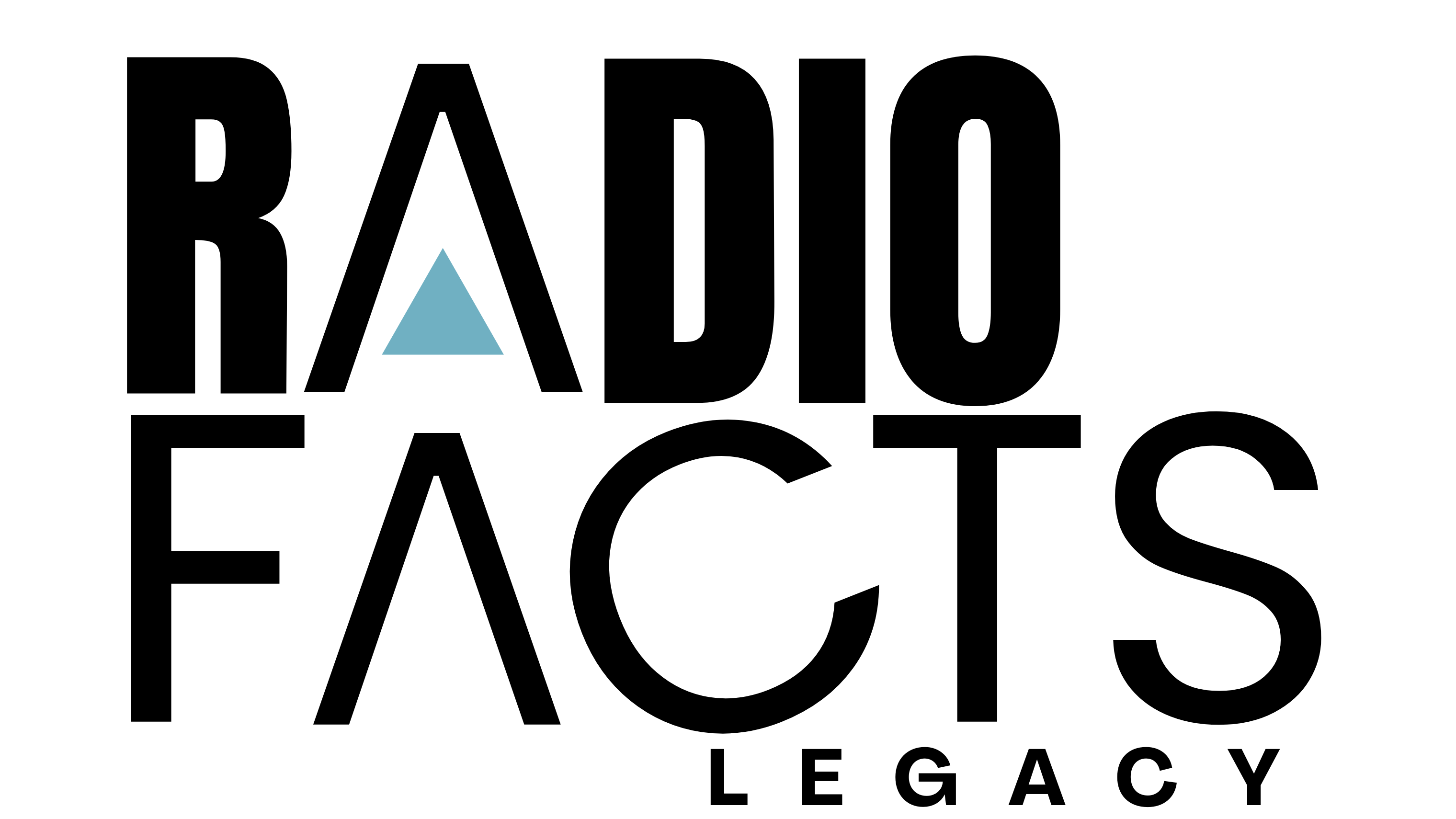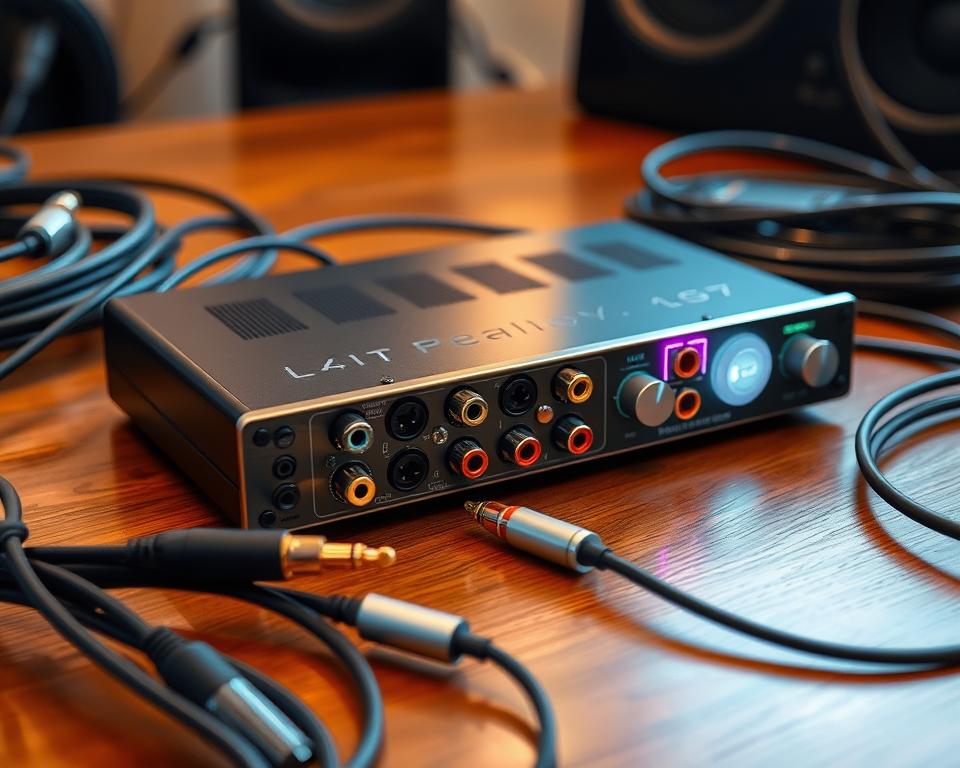Did you know 90% of music producers use an audio interface? These devices are key for connecting instruments and microphones to computers. They help artists record top-notch audio, often at rates of 24 bit/192kHz. This is way better than the 16bit/44kHz of CDs and streaming services.
Every home recording studio needs a recording interface. It turns analog signals into digital audio. Musicians can pick from many interfaces, from simple two-in/two-out for solo artists to complex setups for bands. An audio interface is crucial for anyone wanting to produce great audio, making it a must-have for music production.
Audio interfaces help reduce latency and offer direct monitoring. This lets musicians hear sound in real time. As a vital part of music production gear, an audio interface is the first step to making high-quality recordings. With the right one, artists can elevate their music.
What is an Audio Interface?
An audio interface is key for connecting your instruments and microphones to your computer. It lets you record and produce high-quality audio. It acts as a sound card, changing analog signals to digital and back, for precise sound capture and playback.
Choosing the right audio interface is important. Look at the number of inputs and outputs you need. Also, consider the connectivity options like USB or Thunderbolt. The quality of converters and preamps affects the sound quality. Brands like Focusrite offer features for all levels, from beginners to pros.
Audio interfaces vary in price, from under $100 to over $2,000. The price depends on features, quality, and brand. But, there’s a wide range to fit any budget. Whether you’re a singer, producer, or audio engineer, you can find the perfect interface.
How to Choose the Right Audio Interface
Choosing the right audio interface for music production involves several key factors. Think about the number of inputs and outputs you need. Also, consider digital I/O options for future expansions. A good interface should offer high-quality sound and match your current gear.
Experts say picking the right interface means looking at specific features. This includes the types of connections and the number of headphone outputs. Many audio interfaces have ‘combi’ sockets for XLR or quarter-inch inputs, perfect for small studios or live setups.
It’s also important to consider the brand and model of the interface. Brands like Zoom and Behringer offer a variety of options. By researching and reading reviews, you can find the perfect interface for your needs.
Factors to Consider
When choosing an interface, look at the sample rate and bit depth. Also, check the digital audio connections. A single Lightpipe connection can handle eight channels of audio at 44.1 or 48 kHz, great for recording multiple tracks.
Popular Brands
Zoom and Behringer are top brands in the industry. Their products, like the Zoom L-12 and L-20, and Behringer’s X series, offer various features. By considering these factors, you can find the best interface for your music production.
Setting Up Your Audio Interface
Setting up your audio interface is key. You need the right music production gear. This includes a sound card, a vital part of your audio setup. First, connect your audio interface to your computer using USB or Thunderbolt, depending on your device.
A good audio interface can greatly improve your recordings. For instance, the Focusrite Scarlett 2i2 is a great choice for beginners. It offers high-quality sound and is easy to connect. Think about how many inputs and outputs you need, and what connections you need, like XLR or 1/4″ inputs.
You’ll also need other audio equipment like studio monitors, headphones, and microphones. Condenser microphones need phantom power, but dynamic microphones don’t. Choosing the right music production gear and setting it up right will help you make great recordings and enjoy music production.
Required Equipment
To set up your audio interface, you’ll need a few things. You’ll need a computer, an audio interface, and a sound card. You’ll also need cables, like XLR or 1/4″ cables, to connect your microphones and instruments.
Step-by-Step Installation
With all the necessary equipment, follow the manufacturer’s instructions to install and connect your audio interface. Choose the audio interface as your primary output device. Adjust the settings to get the best sound quality. With the right audio equipment and practice, you can make high-quality recordings and enjoy music production.
Common Uses for Audio Interfaces
Audio interfaces are key in music production, found in home studios and live shows. They connect instruments and mics to computers, making digital audio. Home studios use them to record and produce music, with options like combo connectors and MIDI.
For live shows, an interface is vital for top-notch sound. Interfaces from Steinberg, for example, have cool features like direct monitoring and phantom power. They let you connect many mics and instruments, making them flexible and reliable.
Choosing the right audio interface is crucial. Home studios might need a simple interface, while live shows require more inputs and outputs. The right interface ensures quality sound and a better music-making experience.
Home Recording Studios
In home studios, audio interfaces are essential for capturing great sound. They let musicians connect mics and instruments to computers, making professional recordings possible. Many come with software, making it easy to record, edit, and mix music.
Live Sound and Performance
For live shows, audio interfaces are key for delivering excellent sound. They offer features like direct monitoring and phantom power. Interfaces also have MIDI input and output, making them great for live sound setups.
Troubleshooting Common Issues
Working with an audio interface can sometimes lead to problems. Issues like no sound, distorted audio, and latency can be frustrating. To fix these, it’s important to know the possible causes and follow systematic steps. For example, troubleshooting guides can help with connection and software issues.
Connection problems often stem from bad cable connections, which are common. Using good cables can cut down on these issues by 25%. Also, updating drivers is key, as 75% of users fix driver problems with the latest updates.
Connection Problems
Testing audio cables with known working ones is a basic troubleshooting step. It’s also good to check for any damage on cables and connections. Adjusting the buffer size can help with latency, improving performance for 60% of users.
Software Compatibility
For more complex issues, checking CPU, RAM, and disk usage can improve performance by 15%. Keeping input levels below the clipping point prevents distortion. By following these steps and using the right equipment, like a good USB audio interface, users can solve common problems and get high-quality sound.
Tips for Enhancing Audio Quality
Exploring audio interfaces is exciting, but improving your recordings is key. By using smart techniques, you can make your audio stand out. One important step is to use quality cables. Good cables help cut down on signal noise, making your audio clearer.
Also, learning how to monitor your audio is crucial. Use studio monitors or top-notch headphones with the right setup. This helps you hear your audio better and make it sound great.
Improving audio quality is a continuous effort. But with the right tools and skills, you
can achieve amazing results. Dive into the world of digital audio interface and let your creativity grow.

















